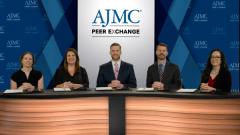
HIV Incidence and Prevalence
A panel of experts open a discussion surrounding the current disease landscape of HIV.
Episodes in this series

Adam C. Welch, PharmD, MBA: Hello, and welcome to this AJMC® Peer Exchange program titled “Optimizing HIV Treatment.” I’m Dr Adam Welch, a pharmacist with ETSU [East Tennessee State University] Health [in Johnson City, Tennessee]. Joining me in this panel are my colleagues Shauna Applin, a nurse practitioner and the HIV clinical director with Community Health Care [in Tacoma, Washington]; Ann Khalsa, a physician and the HIV clinical director with Valleywise Community Health Center– McDowell [in Phoenix, Arizona]; Christian Ramers, a physician, and the chief of population health at Family Health Centers of San Diego [in California]; and Alina Orozco, a nurse and the director of case management at Clear Health Alliance in Miami [Florida]. Our panel of experts will describe the burden of the HIV epidemic, including its impacts on patients and payers. We’ll review the latest evidence in treatment guidelines that inform our decision-making in HIV and discuss unmet needs in the future directions of the treatment of HIV. Thank you. Let’s begin.
Shauna, talk a little about the HIV epidemic in this country. Tell me about its prevalence.
Shauna Applin, A-NP, CNM, AAHIVS: With incidence and prevalence in the United States, we look at the Centers for Disease Control [and Prevention]. Incidence in the United States hasn’t changed much despite the introduction of great prevention methods. In 2020 there were 30,000 new cases in the United States, and that was down 17% from the year before. But that was complicated by the COVID-19 pandemic. Things like access to medical care, testing, and even supply shortages affected that. There were 30,000 new infections in the United States in 2020. Of those infections, about 80% were cisgender men, and 68% of those were men who have sex with men. Only about 22% had a heterosexual risk for acquiring HIV.
The thing that impacts me about the data, though, is the racial disparities we’re seeing. Though the Black community makes up only about 14% of those living in the United States, they accounted for 42% of new infections. The Hispanic population was about 19% of the total population, and they accounted for 27% of new infections. So there’s quite a disparity in communities of color. The other thing I’d like to call out in incidence was about 50% of new infections were young individuals aged 13 to 34. From a prevalence standpoint, there are about 1.2 million individuals living with HIV in the United States, but about 13% of the total living with HIV are unaware of their HIV infection.
Adam C. Welch, PharmD, MBA: Wow. We’re seeing rates that have been relatively flat over the past few years. Some of that might even be an underestimation because of COVID-19, when individuals weren’t seeking health care in the ways they did prior to the pandemic. This is still a very burdensome disease across the country. It’s affecting a variety of patient demographics, and even younger individuals are being infected with HIV.
Transcript edited for clarity.
Newsletter
Stay ahead of policy, cost, and value—subscribe to AJMC for expert insights at the intersection of clinical care and health economics.






























































